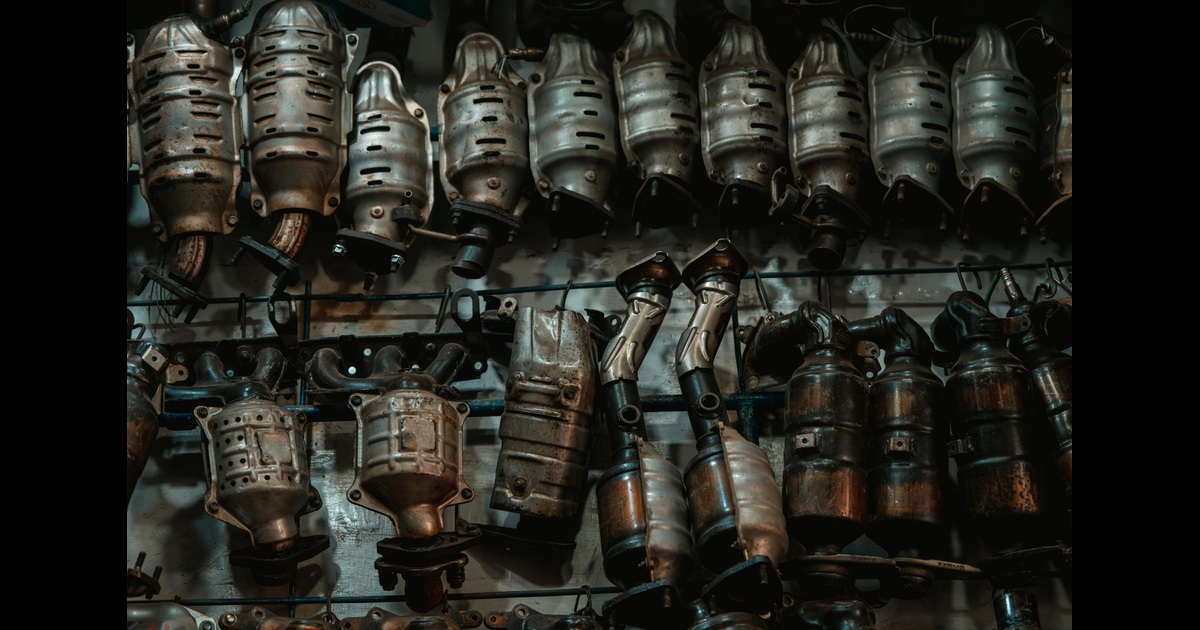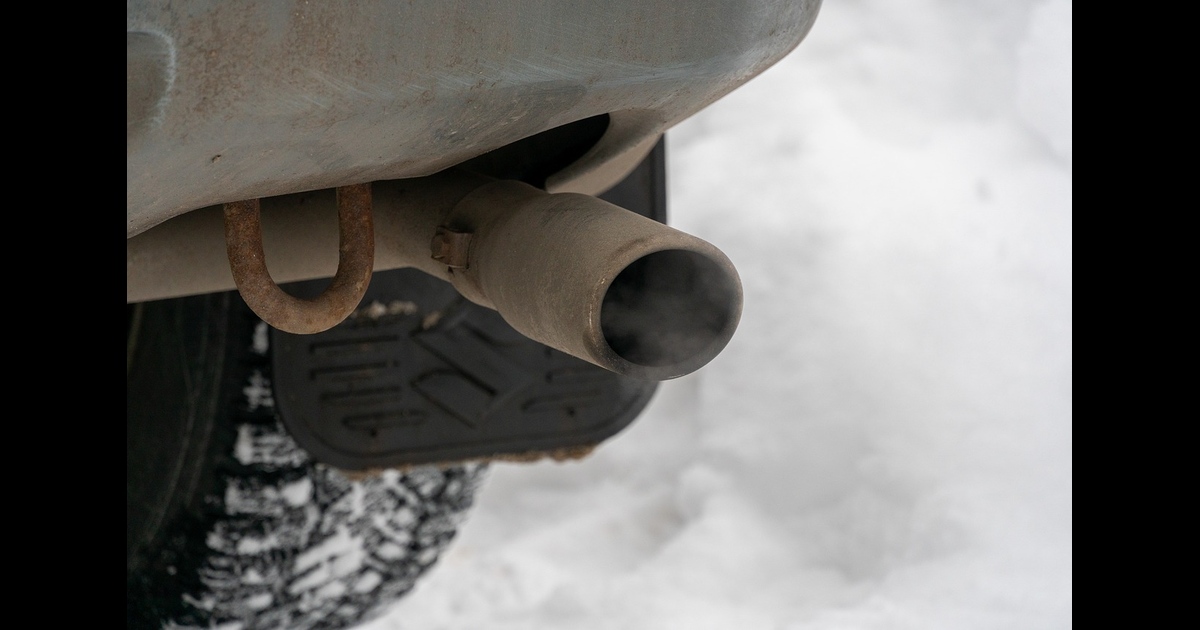- Exhaust
- Suspension
- Towing
- Performance
- Filters
- 4x4 & Camping
- Truck
- Sale
How Does a Catalytic Converter Work?
Date Posted: 17 March 2025

You might be surprised that cat converters have existed, in one shape or another, for well over a century. It's more likely that you know that cats have been a standard component since the late 1970s and '80s. Does that make the tech outdated? How does a catalytic converter work, and what advancements have happened over time? In this article, we’ll talk about this, but let’s cover the bases first.
What Is a Catalytic Converter?
To answer - how does a cat converter work? - we should start by understanding what it is and what purpose it serves. A catalytic converter (or cat for short) is a crucial part of your vehicle’s exhaust system. Its main job is to reduce harmful emissions by converting toxic gases into less harmful ones before they exit the tailpipe.
Inside, a cat converter has a honeycomb-like structure coated with precious metals like platinum, palladium, and rhodium. These metals act as catalysts, triggering chemical reactions that break down pollutants such as carbon monoxide (CO), nitrogen oxides (NOx), and unburned hydrocarbons (HC).
Without a catalytic converter, vehicle emissions would be significantly more toxic - contributing to air pollution and environmental damage. That’s why cat converters are effectively required by law in Australia (and most other places), and why modern cars wouldn’t pass emissions tests without one.
The specific emission standards that vehicles need to pass in Australia are based on the type of vehicle and the date of manufacture, but, regardless of the specific standard, they can’t pass without a catalytic converter. On that note, since January 1, 2025, Australia has started implementing new vehicle efficiency standards that will apply to new vehicles. In short, a cat converter’s job is to limit pollution, and all modern vehicles need to have them.
The Different Types of Cat Converters

Although all cat converters serve the same purpose, there are different types. First, based on how they work, there are two main types:
- Two-way catalytic converters - These are found in older petrol and diesel vehicles. They convert carbon monoxide (CO) into carbon dioxide (CO₂) and unburned hydrocarbons (HC) into CO₂ and water. However, they don’t reduce nitrogen oxides (NOx), which is why they have been largely replaced in modern petrol vehicles.
- Three-way catalytic converters - These are standard in most modern petrol cars and these perform the same functions as two-way converters but also break down nitrogen oxides (NOx) into nitrogen (N₂) and oxygen (O₂), further reducing emissions.
There are also different types of cat converters based on how they are meant to be installed:
- Direct-fit catalytic converters - These are designed to replace the factory-installed cat converter on a specific vehicle model. They come with the necessary fittings and flanges, making installation easy - usually just a simple bolt-on process with no need for cutting or welding. Because they are vehicle-specific, direct-fit converters tend to be more expensive than universal options, but they ensure a perfect fit and proper function.
- Universal catalytic converters - Unlike direct-fit converters, these are not designed for a specific vehicle. Instead, they can be installed on various makes and models as long as they match the exhaust system’s pipe diameters. However, they typically require cutting, welding, or additional fabrication, making professional installation necessary. That being said, universal converters are often a more affordable option, so this could be a consideration when deciding between a direct-fit vs. universal cat converter.
- Manifold catalytic converters - These are built directly into the exhaust manifold, the component that collects exhaust gases from the engine’s cylinders. Because they are positioned closer to the engine, they heat up faster and become effective sooner, reducing emissions right from the start. Manifold converters are highly vehicle-specific and tend to be more expensive. Replacing one requires removing and replacing the entire exhaust manifold, making installation more complex.
How Does a Catalytic Converter Work Step-by-Step?
Now that we've talked about what cat converters are and the different types, we can answer – how does a cat converter work? – in detail. A catalytic converter is constantly working while your car runs, and during that time:
- Exhaust gases enter the catalytic converter - When your engine burns fuel, it produces harmful gases like carbon monoxide (CO), nitrogen oxides (NOx), and unburned hydrocarbons (HC). These gases travel through the exhaust system and into the catalytic converter.
- The catalyst triggers chemical reactions - Inside the cat converter, the honeycomb-like structure is coated with precious metals (platinum, palladium, and rhodium). These metals act as catalysts, meaning they speed up chemical reactions without being consumed. As exhaust gases pass through, different reactions take place:
- Oxidation of carbon monoxide (CO) – Platinum and palladium help convert carbon monoxide into carbon dioxide, which is far less toxic.
- Oxidation of unburned hydrocarbons (HC) – These are broken down into carbon dioxide and water.
- Reduction of nitrogen oxides (NOx) (only in three-way converters) - Rhodium helps separate nitrogen oxides into nitrogen and oxygen, reducing smog-causing emissions.
- The cleaned gases exit the exhaust system - After these chemical reactions, the now less harmful gases continue through the exhaust system and exit through the tailpipe. By this point, the most dangerous pollutants have been significantly reduced.
Additionally, modern three-way catalytic converters are designed to store and release oxygen as needed to optimise the breakdown of NOx. This function helps the converter work efficiently across different driving conditions, helping emissions remain low.
Does a Cat Converter Affect Performance?
While a cat converter is designed to reduce emissions, it does also have an effect on your vehicle’s performance. Because the converter creates some restrictions in the exhaust system, it can impact engine efficiency, particularly in older vehicles. However, modern catalytic converters are designed to minimise this impact, allowing for cleaner emissions without significantly affecting power or fuel economy.
In fact, most drivers won’t notice any performance loss if the cat is working as it should. However, what happens if a catalytic converter does not work properly?
What if a Cat Converter Does Not Work Properly?

A failing or clogged catalytic converter can cause a range of problems, affecting both your vehicle’s performance and emissions. Over time, various factors can lead to blockages, reducing the converter’s efficiency and potentially causing engine issues. Excess unburned fuel, oil leaks, or coolant contamination can all contribute to clogging by coating the internal honeycomb structure with residue.
This buildup restricts airflow, preventing the converter from properly processing harmful exhaust gases. When a catalytic converter becomes clogged, you may notice several warning signs. A decrease in engine power, sluggish acceleration, or difficulty starting your car are common symptoms. You might also experience poor fuel efficiency, as the engine works harder to push exhaust gases through a restricted system.
In some cases, a clogged converter can cause dark smoke from the exhaust or even a rotten egg smell, indicating unprocessed fuel and sulphur buildup. These are all performance issues that help you diagnose a clogged catalytic converter. If the issue is caught early, cleaning the converter may be an option, but in more severe cases, replacement is often necessary.
Buy Aftermarket Cat Converters Online
If you do want to replace your cat converter, either because your old one is clogged or you want an upgrade, you can find what you need at Perform-Ex Auto. Our range of aftermarket exhaust parts includes both universal and direct-fit catalytic converters. We only offer cat converters from the best automotive manufacturers and all parts come with a manufacturer warranty.
Simply place your order online and we’ll ship the parts to your address. If you need help choosing the right cat converter for your vehicle or have any other questions, contact us - our team is always here to help.
Leave a comment











